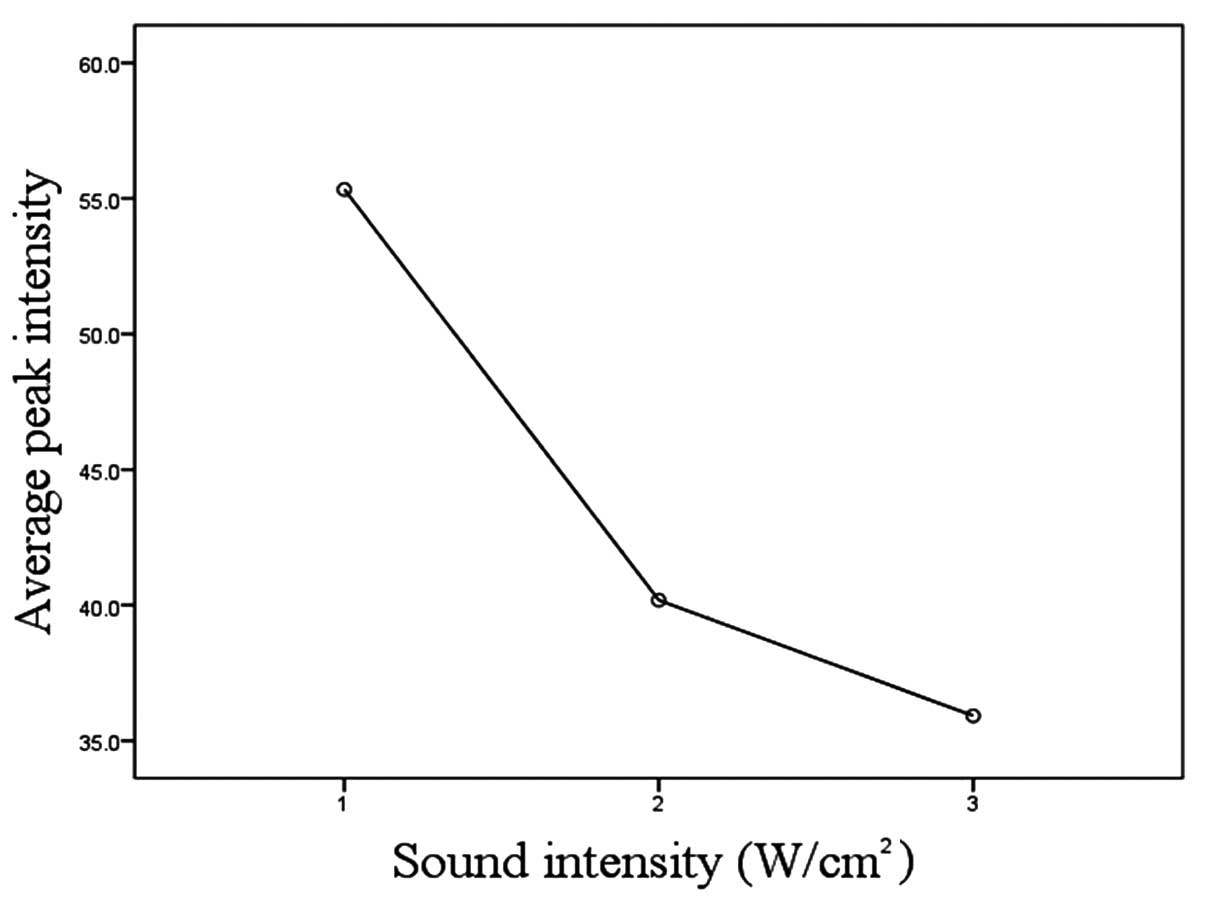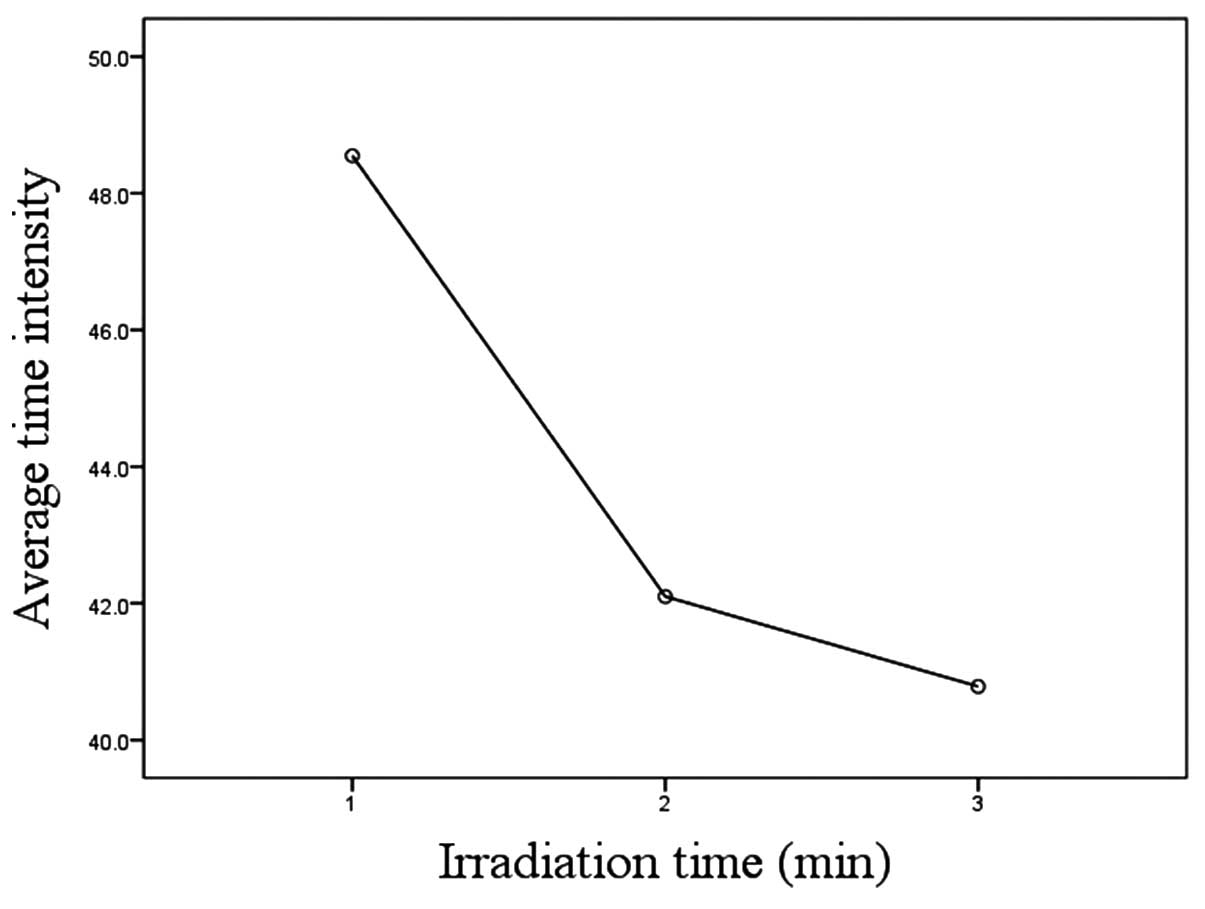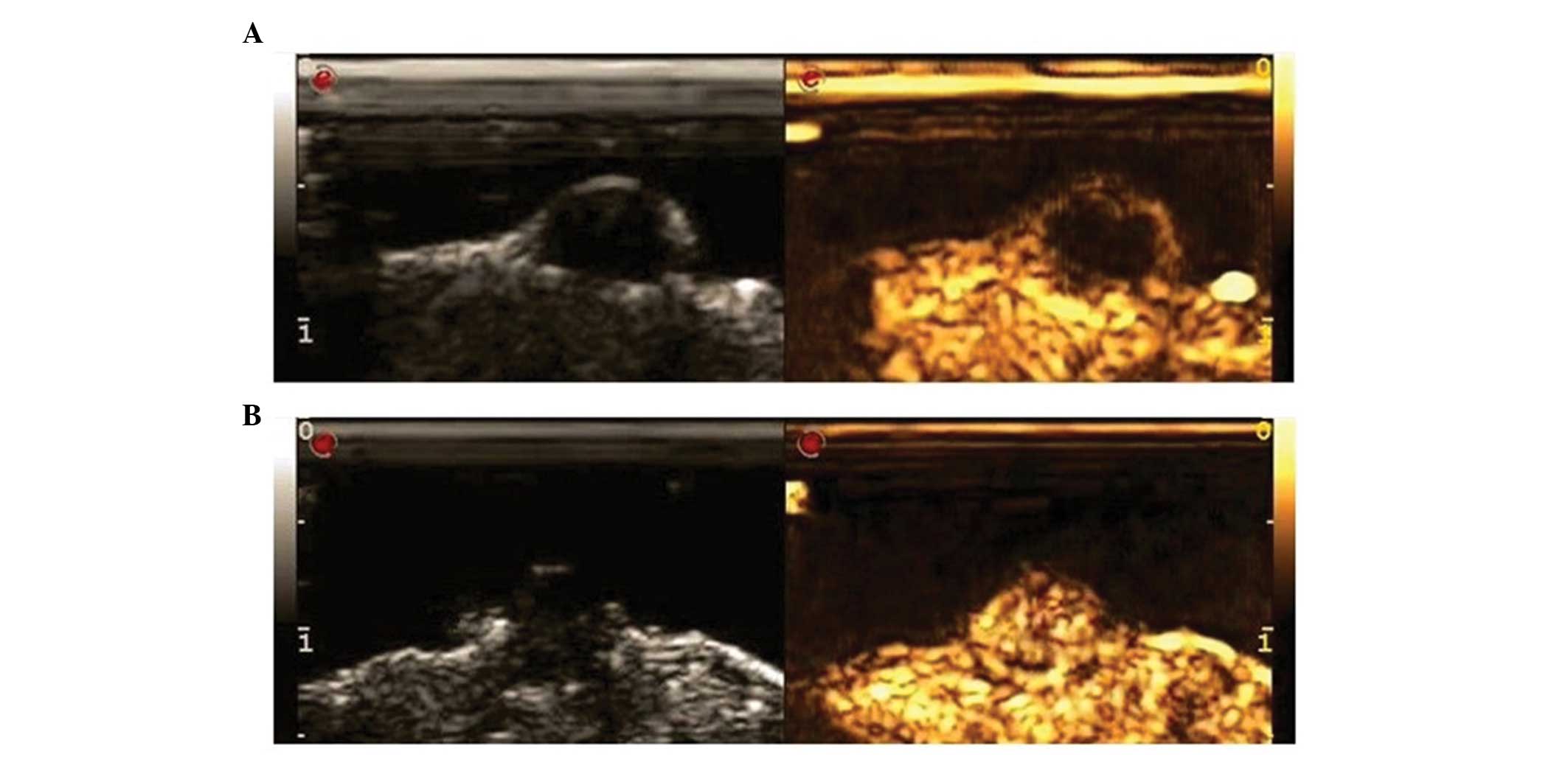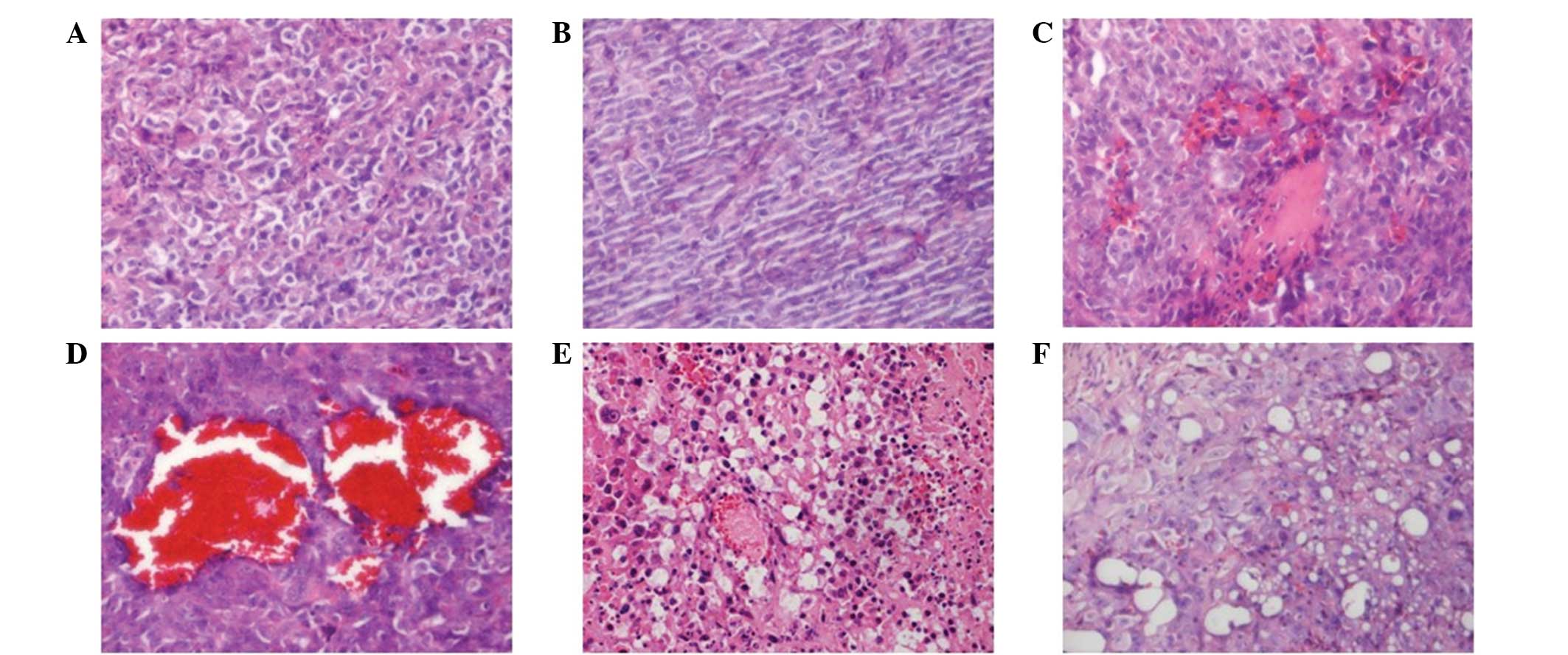|
1
|
Siegel R, Ma J, Zou Z and Jemal A: Cancer
statistics, 2014. CA Cancer J Clin. 64:9–29. 2014. View Article : Google Scholar : PubMed/NCBI
|
|
2
|
Fung-Kee-Fung SD, Porten SP, Meng MV and
Kuettel M: The role of active surveillance in the management of
prostate cancer. J Natl Compr Canc Netw. 11:183–187.
2013.PubMed/NCBI
|
|
3
|
Goldberg AA, Titorenko VI, Beach A and
Sanderson JT: Bile acids induce apoptosis selectively in
androgen-dependent and -independent prostate cancer cells. PeerJ.
1:e1222013. View Article : Google Scholar : PubMed/NCBI
|
|
4
|
Pienta KJ and Smith DC: Advances in
prostate cancer chemotherapy: A new era begins. CA Cancer J Clin.
55:300–318. 2005. View Article : Google Scholar : PubMed/NCBI
|
|
5
|
El Kaffas A, Nofiele J, Giles A, Cho S,
Liu SK and Czarnota GJ: Dll4-notch signalling blockade synergizes
combined ultrasound-stimulated microbubble and radiation therapy in
human colon cancer xenografts. PloS one. 9:e938882014. View Article : Google Scholar : PubMed/NCBI
|
|
6
|
Folkman J: Angiogenesis and apoptosis.
Semin Cancer Biol. 13:159–167. 2003. View Article : Google Scholar : PubMed/NCBI
|
|
7
|
Levenback BJ, Sehgal CM and Wood AK:
Modeling of thermal effects in antivascular ultrasound therapy. J
Acoust Soc Am. 131:540–549. 2012. View Article : Google Scholar : PubMed/NCBI
|
|
8
|
Hwang JH, Brayman AA, Reidy MA, Matula TJ,
Kimmey MB and Crum LA: Vascular effects induced by combined 1-MHz
ultrasound and microbubble contrast agent treatments in
vivo. Ultrasound Med Biol. 31:553–564. 2005. View Article : Google Scholar : PubMed/NCBI
|
|
9
|
Wood AK, Bunte RM, Price HE, Deitz MS,
Tsai JH, Lee WM and Sehgal CM: The disruption of murine tumor
neovasculature by low-intensity ultrasound-comparison between 1-
and 3-MHz sonication frequencies. Acad Radiol. 15:1133–1141. 2008.
View Article : Google Scholar : PubMed/NCBI
|
|
10
|
Liu Z, Gao S, Zhao Y, Li P, Liu J, Li P,
Tan K and Xie F: Disruption of tumor neovasculature by microbubble
enhanced ultrasound: A potential new physical therapy of
anti-angiogenesis. Ultrasound Med Biol. 38:253–261. 2012.
View Article : Google Scholar : PubMed/NCBI
|
|
11
|
Hu X, Kheirolomoom A, Mahakian LM, Beegle
JR, Kruse DE, Lam KS and Ferrara KW: Insonation of targeted
microbubbles produces regions of reduced blood flow within tumor
vasculature. Invest Radiol. 47:398–405. 2012. View Article : Google Scholar : PubMed/NCBI
|
|
12
|
Chen H, Kreider W, Brayman AA, Bailey MR
and Matula TJ: Blood vessel deformations on microsecond time scales
by ultrasonic cavitation. Phys Rev Lett. 106:0343012011. View Article : Google Scholar : PubMed/NCBI
|
|
13
|
Liu HL, Fan CH, Ting CY and Yeh CK:
Combining microbubbles and ultrasound for drug delivery to brain
tumors: Current progress and overview. Theranostics. 4:432–444.
2014. View Article : Google Scholar : PubMed/NCBI
|
|
14
|
Ji L, Si Y, Liu H, Song X, Zhu W and Zhu
A: Application of orthogonal experimental design in synthesis of
mesoporous bioactive glass. Micropor Mesopor Mat. 184:122–126.
2014. View Article : Google Scholar
|
|
15
|
Wang Y, Hu B, Diao X and Zhang J:
Antitumor effect of microbubbles enhanced by low frequency
ultrasound cavitation on prostate carcinoma xenografts in nude
mice. Exp Ther Med. 3:187–191. 2012.PubMed/NCBI
|
|
16
|
Wood AK, Bunte RM, Cohen JD, Tsai JH, Lee
WM and Sehgal CM: The antivascular action of physiotherapy
ultrasound on a murine tumor: Role of a microbubble contrast agent.
Ultrasound Med Biol. 33:1901–1910. 2007. View Article : Google Scholar : PubMed/NCBI
|
|
17
|
Klibanov A: Microbubble contrast agent:
Targeted ultrasound imaging and ultrasound-assisted drug-delivery
applications. Invest Radiol. 41:354–362. 2006. View Article : Google Scholar : PubMed/NCBI
|
|
18
|
Coralic V and Colonius T: Shock-induced
collapse of a bubble inside a deformable vessel. Eur J Mech B
Fluids. 40:64–74. 2013. View Article : Google Scholar : PubMed/NCBI
|
|
19
|
Gao F, Hu Y and Hu H: Asymmetrical
oscillation of a bubble confined inside a micro pseudoelastic blood
vessel and the corresponding vessel wall stresses. Int J Solids
Struct. 44:7197–7212. 2007. View Article : Google Scholar
|
|
20
|
Gao F, Xiong C and Xiong Y: Constrained
oscillation of a bubble subjected to shock wave in microvessel.
Prog Nat Sci. 19:1109–1117. 2009. View Article : Google Scholar
|
|
21
|
Liu J, Xiao S, Wu S, Ou W, He J, Gao S and
Liu Z: Disruption of splenic circulation using microbubble-enhanced
ultrasound and prothrombin: A preliminary study. Ultrasound Med
Biol. 38:1930–1937. 2012. View Article : Google Scholar : PubMed/NCBI
|
|
22
|
Moonen C and Lentacker I: Ultrasound
assisted drug delivery. Preface. Adv Drug Deliv Rev. 72:1–2. 2014.
View Article : Google Scholar : PubMed/NCBI
|
|
23
|
Sorace AG, Warram JM, Umphrey H and Hoyt
K: Microbubble-mediated ultrasonic techniques for improved
chemotherapeutic delivery in cancer. J Drug Target. 20:43–54. 2012.
View Article : Google Scholar : PubMed/NCBI
|
|
24
|
Nabili M, Shenoy A, Chawla S, Mahesh S,
Liu J, Geist C and Zderic V: Ultrasound-enhanced ocular delivery of
dexamethasone sodium phosphate: An in vivo study. J Ther
Ultrasound. 2:62014. View Article : Google Scholar : PubMed/NCBI
|
|
25
|
Kooiman K, Vos HJ, Versluis M and de Jong
N: Acoustic behavior of microbubbles and implications for drug
delivery. Adv Drug Deliv Rev. 72:28–48. 2014. View Article : Google Scholar : PubMed/NCBI
|
|
26
|
Wu F, Chen WZ, Bai J, Zou JZ, Wang ZL, Zhu
H and Wang ZB: Tumor vessel destruction resulting from
high-intensity focused ultrasound in patients with solid
malignancies. Ultrasound Med Biol. 28:535–542. 2002. View Article : Google Scholar : PubMed/NCBI
|
|
27
|
Wood AK, Ansaloni S, Ziemer LS, Lee WM,
Feldman MD and Sehgal CM: The antivascular action of physiotherapy
ultrasound on murine tumors. Ultrasound Med Biol. 31:1403–1410.
2005. View Article : Google Scholar : PubMed/NCBI
|
|
28
|
Goertz DE, Todorova M, Mortazavi O, Agache
V, Chen B, Karshafian R and Hynynen K: Antitumor effects of
combining docetaxel (taxotere) with the antivascular action of
ultrasound stimulated microbubbles. PLoS One. 7:e523072012.
View Article : Google Scholar : PubMed/NCBI
|
|
29
|
Chen H, Brayman AA, Bailey MR and Matula
TJ: Blood vessel rupture by cavitation. Urol Res. 38:321–326. 2010.
View Article : Google Scholar : PubMed/NCBI
|
|
30
|
Ahmadi F, McLoughlin IV, Chauhan S and
Ter-Haar G: Bio-effects and safety of low-intensity, low-frequency
ultrasonic exposure. Prog Biophys Mol Biol. 108:119–138. 2012.
View Article : Google Scholar : PubMed/NCBI
|
|
31
|
Polat BE, Hart D, Langer R and
Blankschtein D: Ultrasound-mediated transdermal drug delivery:
Mechanisms, scope and emerging trends. J Control Release.
152:330–348. 2011. View Article : Google Scholar : PubMed/NCBI
|
|
32
|
Carvell KJ and Bigelow TA: Dependence of
optimal seed bubble size on pressure amplitude at therapeutic
pressure levels. Ultrasonics. 51:115–122. 2011. View Article : Google Scholar : PubMed/NCBI
|
|
33
|
Stride EP and Coussios CC: Cavitation and
contrast: The use of bubbles in ultrasound imaging and therapy.
Proc Inst Mech Eng H. 224:171–191. 2010. View Article : Google Scholar : PubMed/NCBI
|
|
34
|
Hosseinkhah N and Hynynen K: A
three-dimensional model of an ultrasound contrast agent gas bubble
and its mechanical effects on microvessels. Phys Med Biol.
57:785–808. 2012. View Article : Google Scholar : PubMed/NCBI
|
|
35
|
VanBavel E: Effects of shear stress on
endothelial cells: Possible relevance for ultrasound applications.
Prog Biophys Mol Biol. 93:374–383. 2007. View Article : Google Scholar : PubMed/NCBI
|
|
36
|
Dayton P, Klibanov A, Brandenburger G and
Ferrara K: Acoustic radiation force in vivo: A mechanism to
assist targeting of microbubbles. Ultrasound Med Biol.
25:1195–1201. 1999. View Article : Google Scholar : PubMed/NCBI
|
|
37
|
Basta G, Venneri L, Lazzerini G, Pasanisi
E, Pianelli M, Vesentini N, Del Turco S, Kusmic C and Picano E:
In vintro modulation of intracellular oxidative stress of
endothelial cells by diagnostic cardiac ultrasound. Cardiovasc Res.
58:156–161. 2003. View Article : Google Scholar : PubMed/NCBI
|
|
38
|
Chen H, Brayman AA, Kreider W, Bailey MR
and Matula TJ: Observations of translation and jetting of
ultrasound-activated microbubbles in mesenteric microvessels.
Ultrasound Med Biol. 37:2139–2148. 2011. View Article : Google Scholar : PubMed/NCBI
|
|
39
|
Miller MW, Everbach EC, Cox C, Knapp RR,
Brayman AA and Sherman TA: A comparison of the hemolytic potential
of Optison and Albunex in whole human blood In vintro:
Acoustic pressure, ultrasound frequency, donor and passive
cavitation detection considerations. Ultrasound Med Biol.
27:709–721. 2001. View Article : Google Scholar : PubMed/NCBI
|
|
40
|
Ueda H, Mutoh M, Seki T, Kobayashi D and
Morimoto Y: Acoustic cavitation as an enhancing mechanism of
low-frequency sonophoresis for transdermal drug delivery. Biol
Pharm Bull. 32:916–920. 2009. View Article : Google Scholar : PubMed/NCBI
|
|
41
|
Tu J, Hwang JH, Matula TJ, Brayman AA and
Crum LA: Intravascular inertial cavitation activity detection and
quantification in vivo with Optison. Ultrasound Med Biol.
32:1601–1609. 2006. View Article : Google Scholar : PubMed/NCBI
|


















